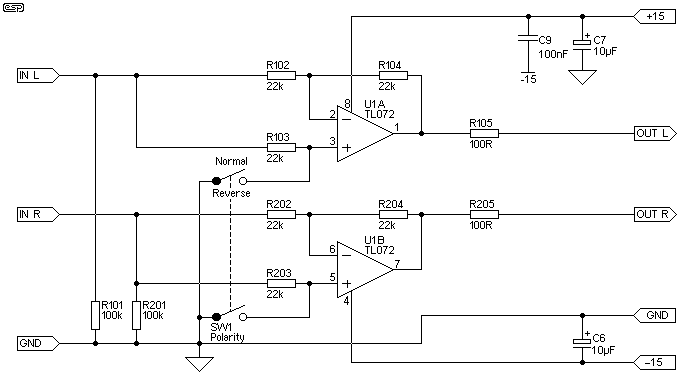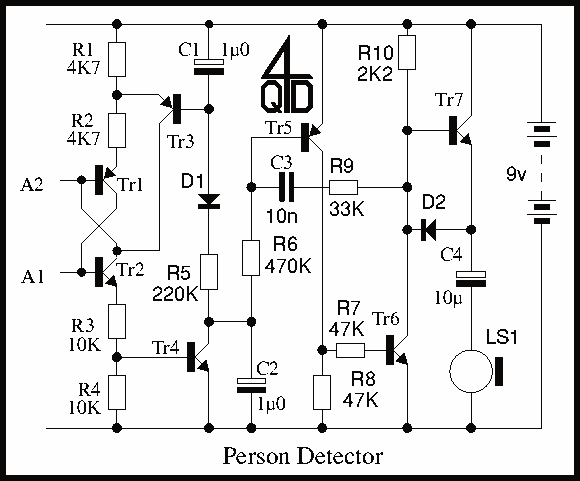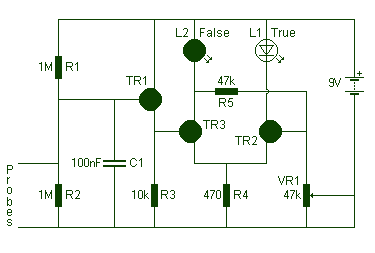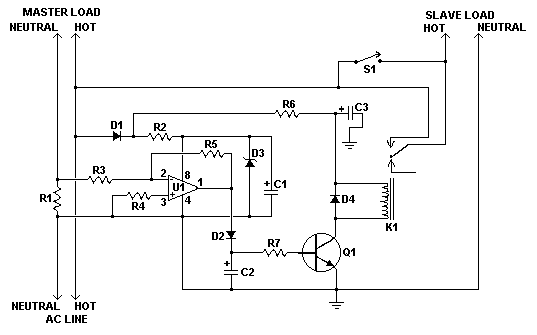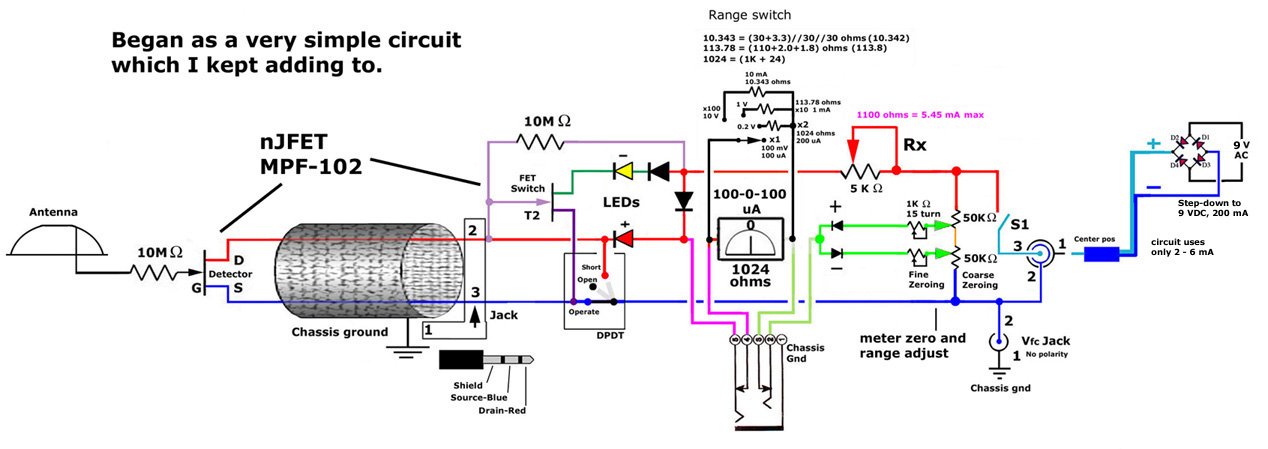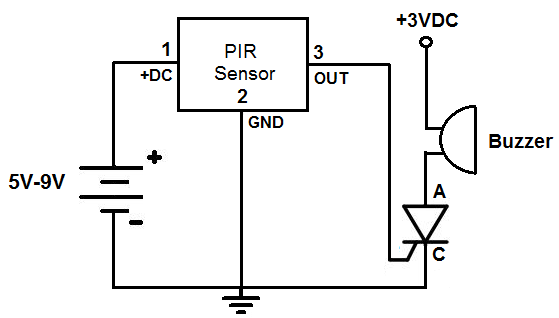
Air-Pressure Change Detector
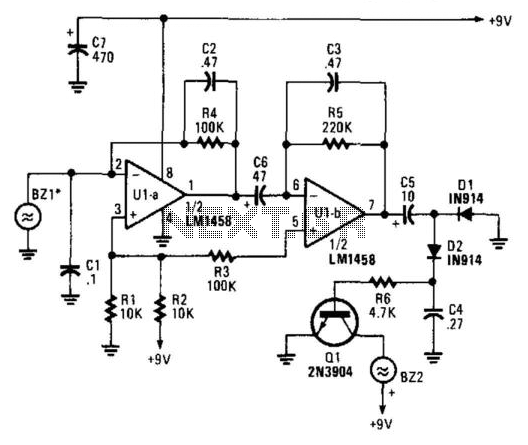
A piezoelectric detector (BZ1) is utilized in this circuit to sense variations in air pressure. BZ1 generates a voltage that is amplified by U1A and U1B. The frequency response is restricted to low frequencies. The signal is rectified by diodes D1 and D2, which in turn activates Q1, driving BZ2, a piezoelectric buzzer.
The circuit operates by employing a piezoelectric detector, designated as BZ1, which is sensitive to changes in air pressure. When air pressure varies, BZ1 generates a corresponding voltage signal. This signal is then fed into an operational amplifier configuration, specifically U1A and U1B, where it is amplified to a suitable level for further processing. The design ensures that the frequency response is limited to low frequencies, which is ideal for applications where only slow variations in pressure need to be detected.
The amplified signal is subsequently routed to a rectification stage consisting of diodes D1 and D2. This rectification process converts the alternating current (AC) voltage signal generated by BZ1 into a direct current (DC) signal, making it suitable for driving the next stage of the circuit.
The rectified signal is then used to control a transistor, Q1, which acts as a switch. When the signal from the rectification stage exceeds a certain threshold, Q1 is activated, allowing current to flow to BZ2, the piezoelectric buzzer. BZ2 produces an audible sound as a response to the detected changes in air pressure, alerting the user to the event.
This circuit is particularly useful in applications such as pressure sensing in HVAC systems, environmental monitoring, or as an alert mechanism in various industrial processes. The combination of a piezoelectric detector and a buzzer provides a compact and efficient solution for pressure detection and alerting. A piezoelectric detector (BZ1) is used in this circuit to detect a change in air pressure. BZ1 produces a volt age that is amplified by U1A and UXB. Frequency response is limited to low frequencies. The signal is rectified by D1 and D2 and drives Ql, which activates BZ2, a piezoelectric buzzer.
The circuit operates by employing a piezoelectric detector, designated as BZ1, which is sensitive to changes in air pressure. When air pressure varies, BZ1 generates a corresponding voltage signal. This signal is then fed into an operational amplifier configuration, specifically U1A and U1B, where it is amplified to a suitable level for further processing. The design ensures that the frequency response is limited to low frequencies, which is ideal for applications where only slow variations in pressure need to be detected.
The amplified signal is subsequently routed to a rectification stage consisting of diodes D1 and D2. This rectification process converts the alternating current (AC) voltage signal generated by BZ1 into a direct current (DC) signal, making it suitable for driving the next stage of the circuit.
The rectified signal is then used to control a transistor, Q1, which acts as a switch. When the signal from the rectification stage exceeds a certain threshold, Q1 is activated, allowing current to flow to BZ2, the piezoelectric buzzer. BZ2 produces an audible sound as a response to the detected changes in air pressure, alerting the user to the event.
This circuit is particularly useful in applications such as pressure sensing in HVAC systems, environmental monitoring, or as an alert mechanism in various industrial processes. The combination of a piezoelectric detector and a buzzer provides a compact and efficient solution for pressure detection and alerting. A piezoelectric detector (BZ1) is used in this circuit to detect a change in air pressure. BZ1 produces a volt age that is amplified by U1A and UXB. Frequency response is limited to low frequencies. The signal is rectified by D1 and D2 and drives Ql, which activates BZ2, a piezoelectric buzzer.
